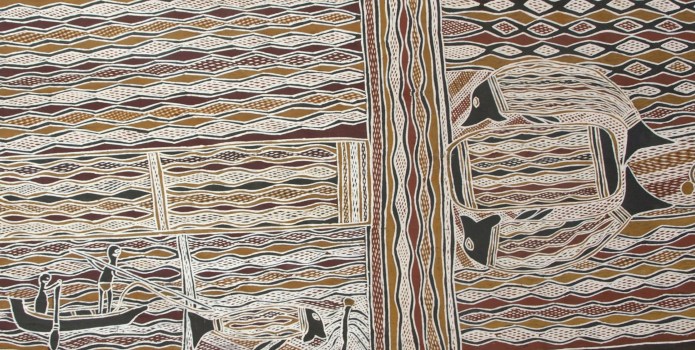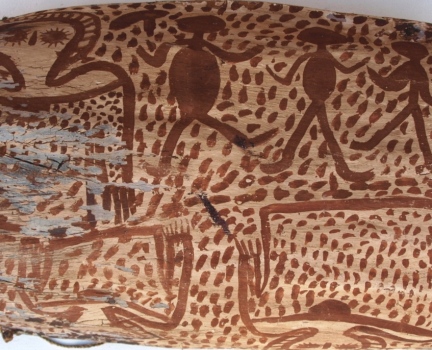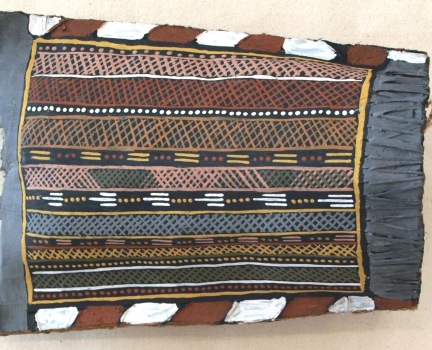Aboriginal Bark Paintings
The bark paintings of Arnhem Land were responsible for shaping many people’s visual experience of Aboriginal Art prior to 1970. Coastal Arnhem Land had a plentiful supply of stringybark trees, and in the right season, large sheets of bark could be cut from the tree trunks and then cured and flattened over a fire. Once they were scraped back the inner surface of the bark made a beautiful surface for the artists to paint on with natural ochre pigments.
Arnhem Land also had an ancient and continuously renewing tradition of rock art painting, so the materials and the culture were readily available to transfer the subject matter painted on rock surfaces to the bark surfaces. European collectors were trading in art from the Arnhem Land people in the late 19th and early 20th centuries.
Arnhem Land has remained a strong and culturally rich environment through the modern era and the few settlements made there were mostly mission settlements. Gunbalanya was the first settlement established and bark paintings were collected there by explorers in 1878. By 1925 Gunbalanya was established as a mission and bark paintings were produced there to sell in the major cities in the south. Other mission settlements were established on Groote Eylandt in 1921, Milingimbi Island in 1923, and Yirrkala in 1935, and these settlements also began to actively traded in bark paintings. In 1963 a Yirrkala Land Rights petition was created on bark as a statement of the people’s identity and land ownership.
Bark paintings were also produced in the Kimberley region of Western Australia and featured a very different subject matter to that of Arnhem Land. By the 1970s major Wandjina images akin to the great rock art sites were created on bark.
The materials used in bark painting, and the nature of the stories depicted in the paintings, tended to locate these paintings in ethnographic collections. Some gallery directors had the foresight to include bark paintings alongside western paintings in state art galleries. In 1929 the National Gallery of Victoria opened the first exhibition of bark paintings held outside an ethnographic museum.
The production of bark paintings remains a strong and viable cultural statement 135 years after the first Aboriginal bark paintings were collected in Arnhem Land. Different communities have maintained their own cultural integrity and the distinctiveness of their paintings on bark remains a feature of this genre. The National Aboriginal and Torres Strait Islander Art awards, held annually in Darwin, have helped promote and display quality bark paintings, and artists continue to find ways to reinvigorate this ancient art form.
Aboriginal bark paintings have the longest history of collectable artworks from indigenous Australia, but in themselves were not central to promoting the strong development of Aboriginal painting that was to emerge in the late 20th century. That role was ultimately to be played by the desert artists of Central Australia.
Read More: Australian Aboriginal Ochre Painting
View More: Hamish Garrgarrku (Karrkarrhba) Solo Exhibition
View More: Aboriginal Artefacts & Carvings





